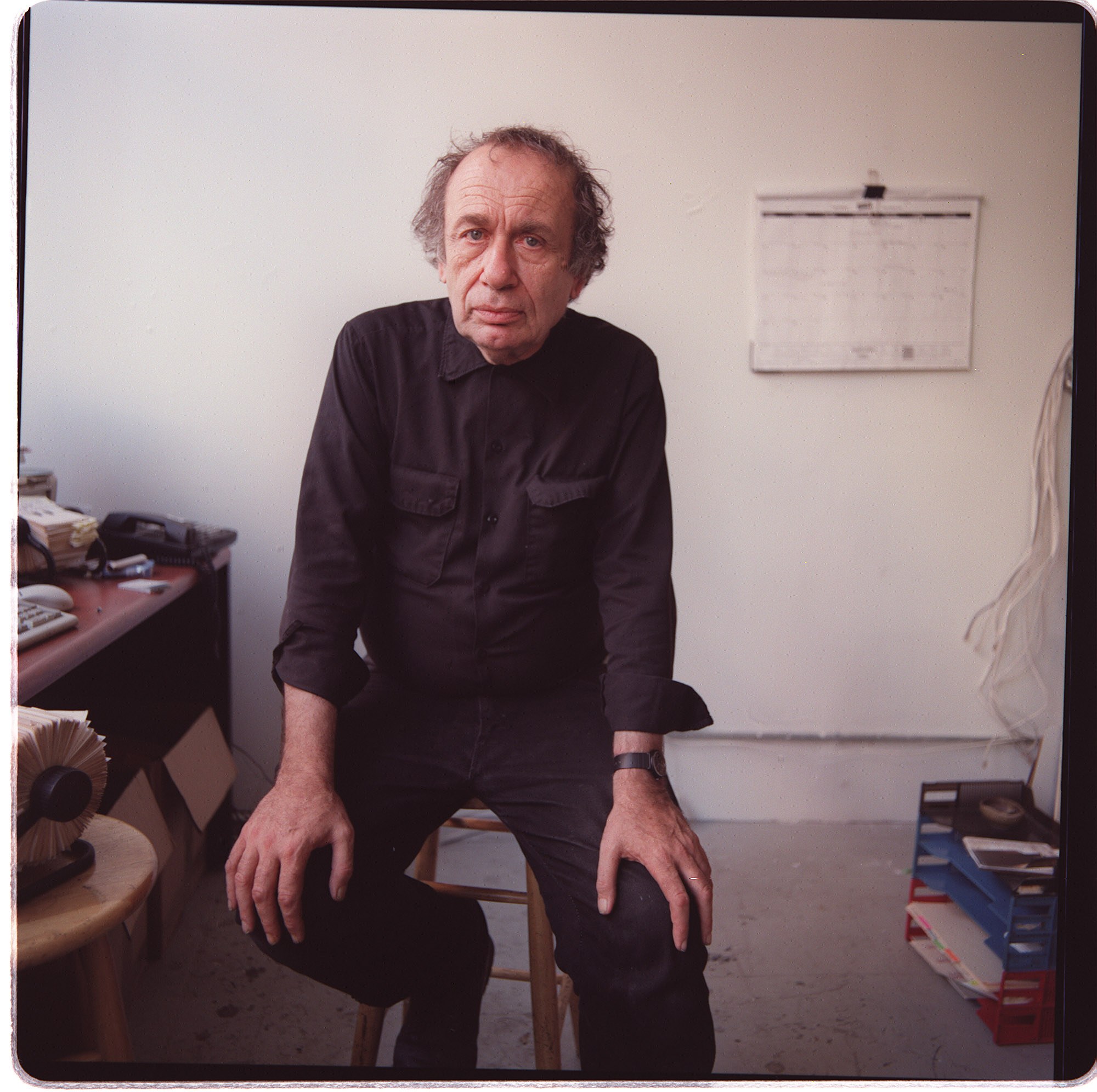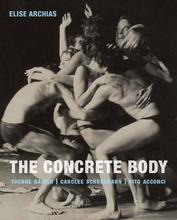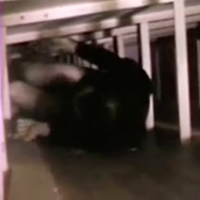More about Vito Acconci
- All
- Info
- Shop
Works by Vito Acconci

Contributor
Vito Hannibal Acconci was a "seminal" artist, poet, and architect, renowned for his transgressive Seedbed and his reflections on space and time.
Like Marina Abramović, Judy Chicago, and Leonardo da Vinci, Acconci theorized his works before, after, and during the process of composition, sharing his reflections with the public. His strategy was to draw the public into private spaces and make private enclaves in public spaces, which he describes as "the air space between bodies and information and other bodies...a mix of electric current and sexual magnetism." For many years he resembled John Cazale's character in Dog Day Afternoon, with long, thin hair hanging from a balding head. Acconci's life is a testament to the way in which odd-looking men, the Willem Dafoes and Steve Buscemis of the world, can still become sex symbols.
Acconci enjoyed doing illegal things, like stalking random strangers on the street in Following Piece, and using his slick theoretical vocabulary, poetic skill, and darling art world status to defend the legitimacy of his pursuit of the public enactment of his fetishes. If this interests you, mention it at your next therapy session. In the waiting room, check out Acconci's insightful, unique essay, "Some Notes on Illegality in Art," and learn how you, too, can make the art world your alibi and stay out of trouble. Acconci writes, "Once a putatively illegal art was made available by exhibitors, it could easily be accepted by viewers. The art audience, in order to live up to its role as art audience, was in fact obliged to accept it." Aside from his assuredness of inevitable acceptance by his audience, Acconci was also confident that he is in fact protected by the criminal code of New York State, which stipulates that stalking must have "no legitimate purpose." In a nutshell, if he wasn't stalking you for art purposes, which are of course it would be real stalking. Acconci's articulate essays and aphorisms do make the legitimacy of his work a real debate.
Although a famous essay by Rosalind Krauss uses Acconci's video work to make the argument that "the medium of video is narcissism," and although his Seedbed is, for most people, an abhorrent example of self-indulgent decadence, Acconci seems to have been genuinely interested in the work rather than making the news. In her obituary of Acconci's ex-wife Rosemary Mayer, however, Mayer's sister, Bernadette Mayer, writes that Rosemary "eventually married Vito Acconci...I don't know why." Ouch! Maybe it was that freaky stuff he did in public that endeared him so to his in-laws.
You wouldn't expect an artist best known for sowing his seed in a gallery to be a philosopher, but Acconci's ideas are as relevant as his artworks. In particular, he draws our attention to the ways in which time and space connect with each other. Although some people can see that on a macro level, time and space are one, very few people can explain, in plain language, how this could be possible. In a discussion of public space, Acconci reminds the reader of a time, not too long ago, when clocks were in every store window, and checking the time was a social event. "But then times changed, and time went away. Well, it didn't go away exactly, but it certainly did go out: time went out like a virus and spread through all those bodies walking the streets. Time aimed straight not for the heart but for the arm. It fit around the wrist in the form of a watch." Acconci's work, like that of the best percussionists, keeps time public, and reminds us that it is possible to get away with something crazy behind the shield of art and poetry.
Sources
- Acconci, Vito. "Public Space in a Private Time." Critical Inquiry 16, No. 4 (Summer, 1990): 900-918.
- Acconci, Vito. "Some Notes on Illegality in Art." Art Journal 50, no. 3 (1991): 69-74.
- van Beek, Paul. "'Some strange mix of public and private' - Vito Acconci’s methodology of connecting the private with the public: Writing on the page - Following the casual passer-by - Inventing the city." Ambiances in action / Ambiances en acte(s) - Inte
- Davis, Ben. "Vito Acconci, Transgressive Progenitor of Performance Art, Dies at 77." ArtNet, Apr. 28, 2017, https://news.artnet.com/art-world/vito-acconci-dies-77-941138.
- Kennedy, Randy. "Vito Acconci, Performance Artist and Uncommon Architect, Dies at 77." New York Times, Apr. 28, 2017, https://www.nytimes.com/2017/04/28/arts/design/vito-acconci-dead-perfor….
- Krauss, Rosalind. "Video: the Aesthetics of Narcissism." October (1976): 51-64.
- Mayer, Bernadette. "ROSEMARY MAYER (1943–2014)." ArtForum, https://www.artforum.com/passages/bernadette-mayer-on-rosemary-mayer-19….
Featured Content
Here is what Wikipedia says about Vito Acconci




Vito Acconci (
Italian: [ˈviːto akˈkontʃi], /əˈkɒntʃi/; January 24, 1940 – April 27, 2017) was an American performance, video and installation artist, whose diverse practice eventually included sculpture, architectural design, and landscape design. His performance and video art was characterized by "existential unease," exhibitionism, discomfort, transgression and provocation, as well as wit and audacity, and often involved crossing boundaries such as public–private, consensual–nonconsensual, and real world–art world. His work is considered to have influenced artists including Laurie Anderson, Karen Finley, Bruce Nauman, and Tracey Emin, among others.
Acconci was initially interested in radical poetry, creating 0 to 9 Magazine, but by the late 1960s he began creating Situationist-influenced performances in the street or for small audiences that explored the body and public space. Two of his most famous pieces were Following Piece (1969), in which he selected random passersby on New York City streets and followed them for as long as he was able, and Seedbed (1972), in which he claimed that he masturbated while under a temporary floor at the Sonnabend Gallery, as visitors walked above and heard him speaking.
In the late-1970s, he turned to sculpture, architecture and design, greatly increasing the scale of his work, if not his art world profile. Over the next two decades he developed public artworks and parks, airport rest areas, artificial islands and other architectural projects that frequently embraced participation, change and playfulness. Notable works of this period include: Personal Island, designed for Zwolle, the Netherlands (1994); Walkways Through the Wall at the Wisconsin Center, in Milwaukee, WI (1998); and Murinsel, for Graz, Austria (2003). Retrospectives of Acconci's work have been organized by the Stedelijk Museum in Amsterdam (1978) and the Museum of Contemporary Art, Chicago (1980), and his work is in numerous public collections, including those of the Museum of Modern Art and Whitney Museum of American Art. He has been recognized with fellowships from the National Endowment for the Arts (1976, 1980, 1983, 1993), John Simon Guggenheim Memorial Foundation (1979), and American Academy in Rome (1986). In addition to his art and design work, Acconci taught at many higher learning institutions. Acconci died on April 28, 2017, in Manhattan at age 77.
Check out the full Wikipedia article about Vito Acconci












